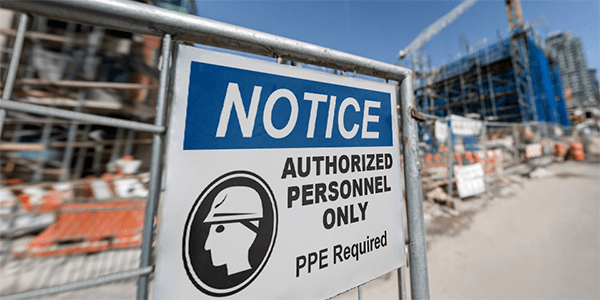Could a Construction Labor Shortage Mean Cutting Corners on Safety?

A recent article in For Construction Pros spotlighted a national trend; in June 2016, National Association of Home Builders (NAHB) surveyed single-family builders and found that labor and subcontractor shortages have become more widespread than they were a year ago.
As housing starts to recover from the 2007-2009 economic downturn, the online magazine reported, builder shortages "have been causing builders to pay higher wages/subcontractor bids (reported by 75% of builders) forcing them to raise home prices (68%) and making it difficult to complete projects on time (58%)."
But what does this mean for on-the-job-safety as builders race to complete jobs?
Not much, according to Jeff Woods, Safety Compliance Analyst for Duralabel, who has seen this scenario play out all too often. In fact, he has based his career on safety and OSHA compliance, working in labor-intensive markets of Florida, Oregon, and North Dakota.
"Deadlines are OK, as long as you have a safety plan and understand that safety trumps the deadline every time," Woods said. "Contractors take on jobs that are quick turnarounds, and pressure workers to get them done. They hire crews that will accept the jobs because these areas are increasingly expensive to live in. They take safety risks that a longer timeframe normally wouldn't allow. Then someone gets hurt, or worse, dies. These accidents are easily preventable if we are mindful of what OSHA regulations are supposed to do-they are supposed to protect us."
What the NAHB Report Indicates
The June 2016 NAHB report consisted of the answers to questions on labor and subcontractor availability. NAHB has periodically added these to the monthly NAHB/Wells Fargo Housing Market Index, which has been measured since 1985.
For Construction Pros writes: "Averaged across nine construction trades [including Carpenters, Excavators, and Painters], the share of builders reporting either some or a serious shortage has gone from a low of 21% in 2012, to 46% in 2014, 52% in 2015 and now 56% in 2016.
"The shortages are also particularly severe for basic skills like carpentry, which are needed during the construction of any home. For example, in the 2016 survey, 72% of builders reported a shortage (either serious or some) of construction workers willing and able to do rough carpentry. The shortages of subcontractors are more widespread. For every one of the 12 trades covered in the 2016 survey (the 12 categories were recommended by the Home Builders Institute), more builders reported a shortage of subcontractors than reported a shortage of labor they employ directly."
The report added that while the shortages appear widespread, conditions vary across the U.S., and not all builders in the survey reported shortages. Some builders commented that they were not seeing any shortage of labor in the markets where they currently build (markets not specified in the report). Shortage conditions in the Western U.S. appear to be the hardest hit by labor shortages, with 87% of respondents saying they needed to compensate by paying higher wages and higher subcontractor bids. 73% reported higher home prices were also assessed in response to the shortage.
Construction Needs Covered
As well as Compliance Assessment Services, Duralabel offers a range of construction resources such as resources on crane safety and safety signage to keep sites safe with clear visual communication. The company also offers PPE such as fall protection products and helpful fall prevention infographics.
Related Resources

5 Industries that Benefit from Custom Industrial Safety Signs and Why
Why Are Custom Industrial SafetySigns Essential for Protecting Workers? In every high-risk workplace, silent ...
Read
OSHA Updates 30-Year-Old Safety & Health Plan Guidelines
OSHA announced its new recommended safety plan intended to aid employers, especially small- and medium-sized ...
Read
Staying Safe During Winter Work: Towers and Turbines
Winter weather brings unique challenges for professionals working in extreme conditions. Tower climbers and ...
Read.png)





